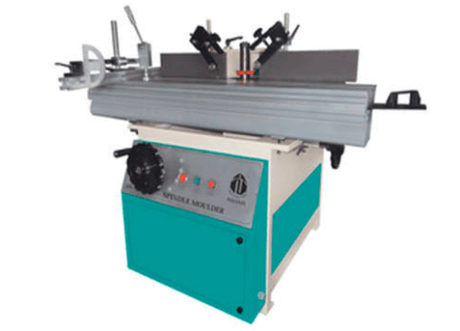can be an enjoyable hobby, a great way to express your creativity, and even a source of potential profit once you are confident! To ensure that you always enjoy top quality finishes and products, it is important to always have the right equipment at hand.
To help you out, we have established some of the most popular woodwork machines which should be an essential part of your arsenal and will help you to create top-quality pieces every time.
1] Planer Thicknesser
One of the essentials to include in your toolkit is a planer thicknesser. A thickness planer is a must for any woodwork project. As a vital woodworking machine, it is designed to trim boards to a constant thickness throughout the entire length, and ensure that they are flat on both surfaces.

A thickness planer is essential for maintaining uniformity and regularity, as well as a professional, polished finish, and can be especially important if you are producing large numbers of items. The machine works by drawing the board through a set of rollers, forcing it to contract the cutting knives.
This means that a great deal of material can be moved in one go - perfect for large projects and those which require a smooth, sleek finish. There is a range of sizes available, allowing you to choose the best for your individual needs and project.
2] Spindle Moulder
A spindle moulder is another absolute must-have, both in terms of ensuring a perfect finish and to keep you safe while working. The primary purpose of the moulder is to place pressure on the piece of wood you are working on.
This ensures that the piece is firmly on the table or surface you are working on, providing additional power, capacity, and allowing continuous cutting ability.

The spindle moulder is often compared to a router table, its distant relative, but differs in that the former is designed as a complete machine.
They are designed primarily to assist with moulding work and should be considered essential if you are serious about taking your woodworking to the next level and producing even, high-quality finishes on every project you tackle.
Technically, a panel saw is defined as any saw which cuts a sheet into sized parts, and the panels can be horizontal or vertical. Both have advantages and offer a great finish, but vertical saws tend to take up slightly less floor space, and so can be popular for this reason.

A horizontal saw will appear as a large saw table, featuring a sliding feed table which is used to push the material through the blade. Vertical saws, on the other hand, come in two types, low or higher cost. Both use 'cross-cutting' - the saw travels through the short side of the sheet.
Lower-cost models are best for cutting lengthwise, and this sees the user physically slide the material through the saw - these are perfect for DIY enthusiasts thanks to their low cost and easy use. Higher cost models see the saw travel through the material - this is obviously an easier, more convenient option.
Woodwork can be rewarding, but you must have the right tools on hand to allow you to complete work safely and efficiently, as well as to achieve the perfect finish. While there is a range of equipment available, these are the key three must-haves to include.
They form the basic starter kit for any aspiring woodworking enthusiast and come in a range of price brackets and proficiencies to cater to both shiny new hobbyists and long-term professionals.

